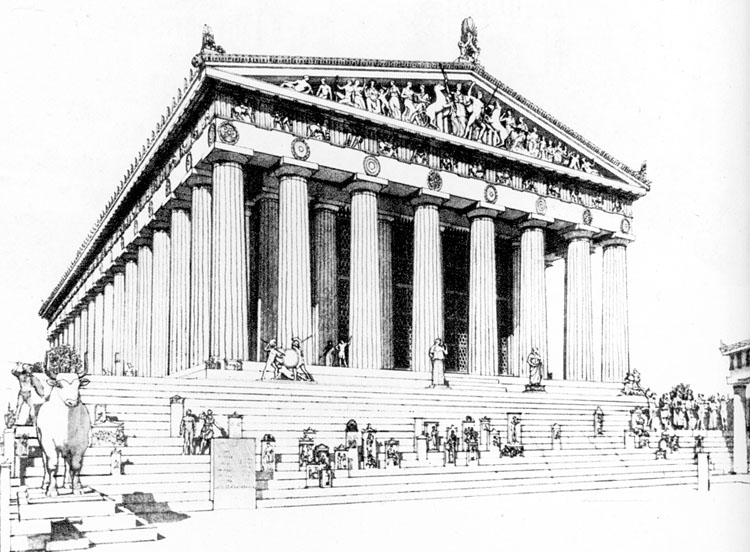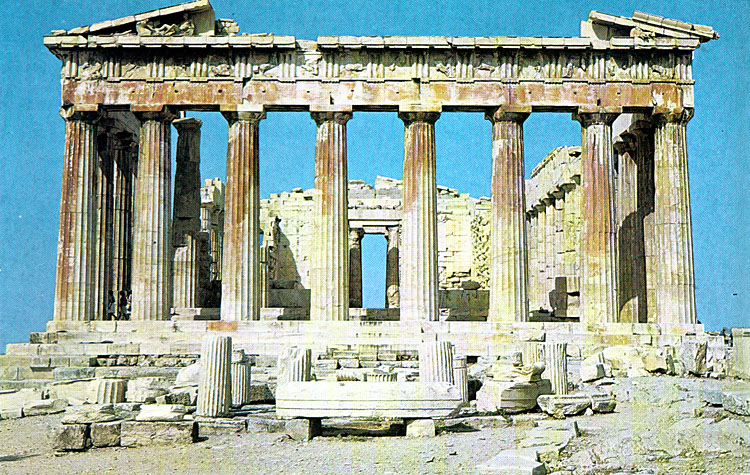Like many cult statues, that of Athena was over-lifesize, standing 40 feet (12 m) high on a pedestal. Phidias constructed the statue around a wooden frame, covering the skin area with ivory and the armor and drapery with gold. This combination of media is called chryselephantine,
from the Greek chrysos, meaning "gold" and elephantinos,meaning "made of vory."
The original statue has long since disappeared and has been reconstructed from descriptions, small copies, and images on coins. Athena was armed and represented in her aspect as the goddess of war. She was shown standing and confronted her viewers directly, wearing Medusa's head on her breastplate and holding a Nike in her right hand and a shield in her left. Both shield and pedestal were decorated with reliefs by Phidias. This colossal statue embodied Athena's importance as the patron goddess of Athens. Her central position in the pediments and the offering of the peplos in the frieze reflected her wisdom and power as well as the Athenians' devotion to her.

Reconstruction of the Parthenon, from the west, by G. P. Stevens

East Façade of the Parthenon

The Parthenon's convex stylobate

 SPRING 2016
SPRING 2016  SCHEDULE
SCHEDULE  REQUIREMENTS
REQUIREMENTS

 SPRING 2016
SPRING 2016  SCHEDULE
SCHEDULE  REQUIREMENTS
REQUIREMENTS